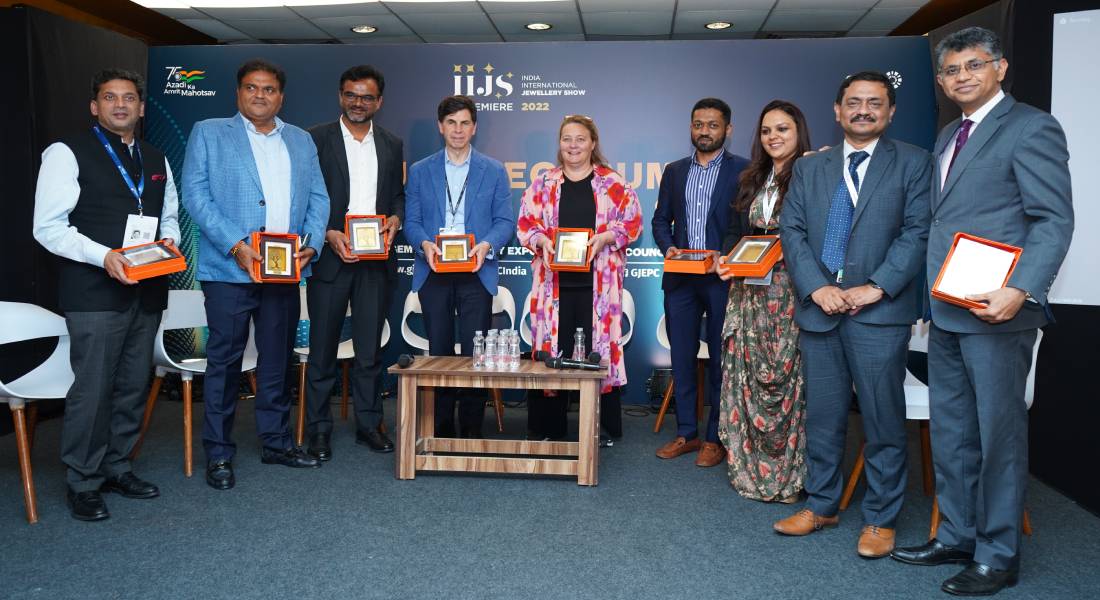It was a packed house with standing room only at the seminar on the hot topic of ‘Lab-Grown Diamonds Business Opportunity’ on Day 2 at IIJS Premiere.
The eminent panel of speakers representing the entire LGD value chain comprised Mukesh Patel, Chairman, Greenlab Diamonds; Keval Virani, Chairman, Indian Diamond Institute (IDI); Pooja Seth Madhavan, MD & Founder, Limelight Lab Grown Diamonds; Manish Jiwani, Convener, MSME Sub-Committee Panel, GJEPC; Tom Moses, Executive Vice President, GIA; Leanne Kemp, Founder & CEO, Everledger; Dipu Mehta, MD, Orra Fine Jewellery; and Zulu Ghevriya, CEO, Smiling Rocks who attended virtually.
The well-attended seminar was moderated by long-time industry observer, Neelesh Hundekari, Senior Partner & Global Lead, Gems & Jewellery, A.T. Kearney, who led the discussion from product manufacture through consumer preferences to the market and finally product marketing in India.
The session saw general consensus on the notion that there is no competition between natural diamonds and LGDs, with both segments catering to loyal customers.
The speakers estimated that Surat had about 5,000 to 6,000 CVD diamond reactors. They said that on the manufacturing front, India was clearly established as the world’s leading manufacturer of CVD-based lab-grown diamonds, while HPHT manufacturing was almost negligible in the country.
Jiwani explained that Indian LGD manufacturers were hesitant to invest in HPHT technology due to China’s dominance in the category and its ability to compete on pricing due to an early-mover advantage.
LGDs up to 1 carat are priced around 70-80% lower than their natural counterparts, and LGDs larger than 1 carat are 40-50% cheaper, giving consumers more bang for their buck.
The manufacturers were optimistic that the use of green energy to produce LGDs would be a strong selling point, especially to eco-conscious millennials and GenZ. However, Leanne Kemp offered an insightful counterpoint, noting, “We cannot say something is good unless we can prove it is good. These diamonds are made using ‘green power’ but gasses such as argon and methane used in the LGD growing process are an environmental challenge from the global warming perspective.
Until there’s a solution for that, we cannot say that buying lab-grown diamonds is a mindful choice.”
The US market has the largest acceptance of lab-grown diamonds, with nearly 70-80% of retailers stocking LGD jewellery.
Education, awareness and the sustainability factor were the key reasons for this, they agreed. The panellists informed that buy-backs were offered on LGD jewellery by all retailers in India in order to ensure consumer confidence in the nascent category. However, whether consumers will continue to invest in lab-grown diamonds, which are expected to fall in value as the technology improves and production scales up, was a question for all to ponder.

